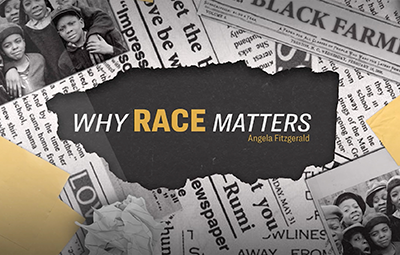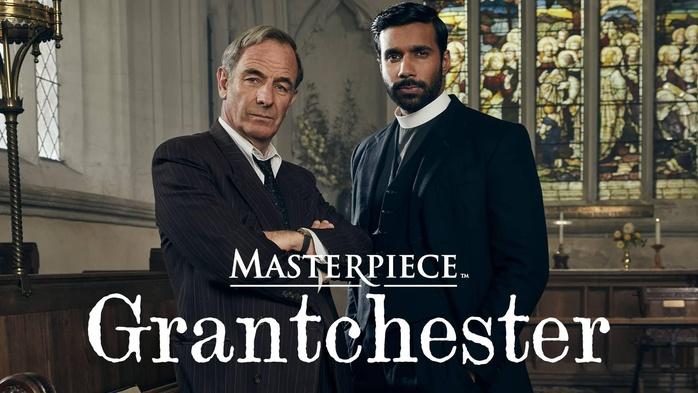Wisconsin Public Television
Transcript: In Wisconsin #912
Air Date: January 27, 2011
Patty Loew:
Welcome to In Wisconsin, Im Patty Loew. This week…
Man:
Conservation warden. Youre under arrest.
Patty Loew:
Robo deer in action. Illegal hunters beware, Bambis hi-tech brother has company. Plus, a new kind of train could soon be on the move in our state.
Man:
Milwaukee has an opportunity to bring streetcars back after an absence since 1958 when the last streetcars operated.
Patty Loew:
And this German city may hold the answer to Wisconsins future. Also, Frank Lloyd Wrights vision for America.
Man:
This is the only Model B-1 of the American System-built homes that was ever built.
Patty Loew:
See how one Milwaukee neighborhood is being transformed next on In Wisconsin.
Announcer:
Major funding for In Wisconsin is provided by the people of Alliant Energy, who bring safe, reliable and environmentally friendly energy to keep homes, neighborhoods and life in Wisconsin running smoothly. Were on for you. And Animal Dentistry and Oral Ssurgery Specialists of Milwaukee, Oshkosh and Minneapolis. A veterinary team working with pet owners and family veterinarians providing care for oral disease and dental problems of small companion animals.
Patty Loew:
There has been a lot of political talk about a controversial high-speed train between Milwaukee and Madison. Well, another form of rail service is flying under the radar, Wisconsins largest city is on track to get low-speed rail. Contributing producer Fred Wessel found there is support, but not everyone is on board in Milwaukee.
Fred Wessel:
High speed rail? For a while it was headed for Wisconsin. But that plan has been derailed. Yet another kind of rail is coming. Kenosha got it first, and Milwaukee is on track to get it next. Here is a clue. It is something that Kenosha has in common with many great cities in Europe, great cities, like Florence, Italy. Its not high-speed rail, it is low-speed rail. A few years ago, Kenosha brought back streetcars, long after they had disappeared from every city in Wisconsin that once had them.
Bradley Preston:
I really think its amazing. A town, city of this size to pull this off and make it work and our ridership has gone nothing but up.
John Doyle:
Were celebrating the 10th anniversary of the return of streetcars to Kenosha.
Bradley Preston:
These are 1951 cars. They were as they were built in 1951.
John Doyle:
And you look at these cars today you wouldnt think it was 1951. They look like brand-new.
Fred Wessel:
During the post World War II years, when these vintage cars were built, streetcar lines were disappearing in one U.S. city after another.
Robert Bauman:
I think we were in a different time. I think we were in a time when sprawl was good, spreading out urban areas was good when we felt we had unlimited resources. There was no limit to oil consumption.
Fred Wessel:
Many Americans began driving to work in their brand new cars. Transit systems like buses and streetcars had to repeat for the remaining commuters and in the end the bus lines won out.
Robert Bauman:
General Motors, Firestone, highway builders basically ganged up and bought up transit systems across the country, abandoned the streetcar lines in favor of rubber-tired buses.
Fred Wessel:
So now, all these years later why the attention on streetcars? In 1991, Milwaukee was granted nearly $290 million to improve public transit. Special bus lanes were going to be built on the express ways. But this plan fizzled out and $48 million of the federal funds had to be given back. After more years of haggling, most of the remainder was diverted to other transportation projects. But now, after all that, enough money is still left over to build a starter streetcar line.
Jeffrey Polenske:
What you see on this map, is you have a solid line that depicts the route that we believe we can build with the $64 million that has been designated for the streetcar.
Robert Bauman:
So Milwaukee was an opportunity to bring streetcars back after an absence since 1958 when the last streetcars operated. Our initial line is really a starter system. It is intended to provide circulation within the central business district, connecting centers of employment, residential areas.
Jeffery Polenske:
There is the intermodal station that Amtrak operates out of and regional bus operates out of. We wanted the make that as a focal or endpoint for the streetcar route.
Robert Bauman:
In terms of modern streetcar systems, were going to have modern low-floor cars, fully accessible for the disabled.
Fred Wessel:
Modern streetcars. Lets hop on board and take a little trip to find out whats so special about them. How do they function in other cities that have had them for many years? What advantages do they offer for efficient mass transit? Our stop is just ahead, and it has got something that looks pretty familiar. Madison. But its not Madison, Wisconsin. Its Madisons sister city, Freiburg in Germany. Freiburg, like Madison, has a population of around a quarter-million. And in addition to bicycles, depends heavily on mass transit.
Andreas Hildebrandt:
Freiburg was heavily bombed in World War II by the Royal Air Force, and 80% of the medieval city was rubble. The decision in Freiburg has been to rebuild it with the medieval ground plan. And you can imagine in a medieval ground plan there is not much space for modern mass mobility. And so, you have to make a choice for need of transport with a high capacity. In our city center, the rail system is good and efficient.
Fred Wessel:
Milwaukees city center is not as compact as Freiburgs, but in Milwaukee most people travel by car. So the new streetcar line might reduce congestion through better mass transit. But why not simply get more people to ride the bus?
Robert Bauman:
We have found through empirical experience that people who have choices in their transportation modes, people who have cars in the garage, who have access to a motor vehicle, will generally not ride an urban bus.
Woman:
I would ride a streetcar before I rode a bus.
John Doyle:
People dont come to Kenosha to go for a bus ride, but they sure come to Kenosha to ride a streetcar.
Woman:
I think streetcars have a certain cachet.
Man:
If its about subsidizing something that no one is going to ride, its not a good idea. If they can prove ridership it is a wonderful idea.
Fred Wessel:
Back in Freiburg, Germany, the VAG manages both streetcar and bus lines, totaling 150 miles in length.
Andreas Hildebrandt:
We transport every year round about 73 million persons. When we replace former bus lines with a new streetcar line, the number of customers raises between 20% and 35%. And I think this is another good argument for the railway system.
Robert Bauman:
As opposed to us a bus system, an urban rail system presents a self-identifying right of way. Fixed guide-way, the rails in the ground, you follow the rail, you know the route.
Andreas Hildebrandt:
You have to make public transport, easy, understandable and convenient. On our stops, we have an electronic customer information system, where the customers can read when the next streetcar of which line will arrive. We have a streetcar on every line every 7 1/2 minutes, and in rush hour, more.
Fred Wessel:
But in Milwaukee, not everyone is eager to see streetcars reappear. Milwaukee County operates the bus transit system for the entire area, and the county has voiced its opposition on several counts.
Brian Dranzik:
It could be a very big impact to our system. Were concerned about the possibility of competition for funding, if not now, maybe in the future, and the competition for our ridership base. The downtown area, in which the city has focused the streetcar on is a heavy ridership corridor for our bus-based mass transit system.
Fred Wessel:
Once again, there may be competition both for dollars and passengers between these two types of mass transit in Milwaukee, just as there was over a half century ago. Unless, of course, people can figure out how the two systems can best work together, as they do in other places to offer attractive and efficient mass mobility for the benefit of everyone.
Robert Bauman:
Once someone accepts the premise that public transit is a public service, then the debate becomes well, what is the most efficient mode. Ultimately, transportation is about wealth creation. We move people, we move goods in a society, in a modern civilization.
Patty Loew:
The engineering for this low-speed rail project should be wrapped up by this summer. The next step, final approval to start construction. If all goes according to plan, the rail line could be on the move in Milwaukee as early as 2013.
Another neighborhood is getting an economic boost by turning back the hands of time. Many consider Frank Lloyd Wrights designs a work of art. Now his vision for America is getting a face-lift. In Wisconsin reporter Liz Koerner shows you one street being transformed back to the way Wright had originally intended in Milwaukee.
Mike Lilek:
Frank Lloyd Wright has been a life long passion going all the way back to high school. Were going to redo the foundation wall.
Liz Koerner:
Mike Lullock is a member of a group called the Frank Lloyd Wright Wisconsin Heritage Tourism Program. The group bought this house built in 1916, because its one-of-a-kind.
Mike Lilek:
This is the only Model B-1 of the American System Built home that was ever built.
Liz Koerner:
The American System Built home was Wrights way of designing houses that were affordable for the working class. His designs were less costly to build, they didnt scrimp on features that made the houses seem luxurious.
Jack Holzeuter:
The fireplaces give you a sense of luxury and coziness what you normally dont find in compact space.
Liz Koerner:
Before starting the restoration, Lilek and the group did a great deal of research.
Mike Lilek:
We can tell in this particular room, there are eight finishes applied over the 90 or so years of the house, starting with this color and then progressing on. You can kind of see in the 50s, we went to a green and a yellow, and so on and so forth. This little hole is different. In this case, we actually dug out some of the plaster itself, and we sent this to a lab for analysis. So when it comes time to fix all of the cracks and things that you see, we know exactly what materials to use.
Liz Koerner:
The hands-on work started on the exterior, turning back the clock in a number of ways, like removing a porch that wasnt in the original design. Theyre also planning to recreate the original look of this exterior. It is called a pebble dash finish.
Mike Lilek:
So, into the stucco that was adhering to the wood lath, you have these pebbles that were put in. The pebbles are actually made out of quartzite and white quartz.
Liz Koerner:
As you might imagine, the to do list for the restoration is quite long, and the cost of the project reflects it.
Mike Lilek:
Well, the original home cost $3,500 to build. And today, the restoration project is pegged at $411,000 for the exterior alone. It is pretty pricey.
Patty Loew:
Since that report first aired a year ago, the front entry, without the porch, now looks the way Wright intended. And the exterior has been returned to its historic pebble dash finish.
Mike Lilek:
This is something that was practiced very commonly in northern Europe, and in particular Poland, in 1916. And a lot of the craftsmen that were here in this neighborhood or in this city at the time were from Poland, and so its quite natural that they knew how to do this. It is a lost art.
Patty Loew:
Restoration of the interior of the house is done, youll find the warm tones of the red gum woodwork to the Wright-designed light fixtures with authentic Edison light bulbs. Tours are available and you can rent the house for special occasions.
:Mike Lilek
Were proud to have been able to do the work we have and now introduce it and bring it to the rest of the world.
Patty Loew:
Lilek knows of only 13 system-built homes in the entire country. The Frank Lloyd Wright Wisconsin Tourism program now owns three of the six Wright buildings on this one block in south Milwaukee. One is a former duplex the owner has lovingly restored. She agreed to take us on her personal tour.
Jill Arena:
Hello, welcome to my home.
Patty Loew:
You can get the full tour by going to our website at wpt.org and click on In Wisconsin. You can also watch this report again.
Our next report puts medical research under the microscope as we take a closer look at a unique University of Wisconsin camp. It invites high school kids from rural areas to compete for a chance to learn in UWs hi-tech labs. In Wisconsin reporter Art Hackett introduces you to a student who penned the winning essay and is on a personal quest for answers in New Richmond.
Art Hackett:
In Cody Gensens room there are two microscopes. He recently hooked them up to a video camera to a laptop computer. He uses them to look at plants and minerals.
Cody Gensen:
I was given it by my grandmother. She would collect stones and gems.
Art Hackett:
And the occasional human specimen.
Cody Gensn:
I accidentally stabbed myself recently and looked at my own blood.
Art Hackett:
Cody Gensen cant get enough hands-on science.
Cody Gensen:
There is not very much science up here that is involved and that you can be a part of.
Art Hackett:
Up here is New Richmond.
Brad Malpert:
New Richmond is kind of a small town. And it was a great opportunity to get students into those large research facilities and see what researchers are working on.
Art Hackett:
The opportunity Brad Malpert is talking about is the annual stem cell camp at the University of Wisconsin in Madison. When Codys teacher talked about the camp, Gensen knew he wanted to go.
Cody Gensen:
I knew basic things that I learned on the Internet, their regenerative properties, how they can regenerate constantly, and become certain tissues.
Art Hackett:
Malpert says some students were hesitant.
Brad Malpert:
Some of them didnt know where stem cell research had started from and how far its gone. And that opportunity to see where the opportunities are and how much benefit there is, I think some of them came back really excited about the future of stem cell research.
Cody Gensen:
There was one experiment where we were actually in one of those controlled environments and we were transferring the stem cells. That I really enjoyed. It was just like wow, youre working with actual equipment.
Art Hackett:
Gensen, his teacher and several other students we interviewed were all stunned by the same thing.
Cody Gensen:
The most I remember is the beating heart cell. That is just really — it was awesome.
Art Hackett:
Stem cells can be differentiated into heart cells, cells which begin beating on their own. But in spite of the potential of stem cells to create tissue which springs to life, the research has been controversial because of where it began.
Linda Hagel:
The early years of embryonic stem cell research when everything was about the embryo, the embryo, the embryo. Now were thinking more about getting to the clinic.
Art Hackett:
UW medical ethicist Linda Hagel told Gensen and the other campers about the origins of the first lines of stem cells. Human embryos left over from artificially induced pregnancies.
Were you aware of the controversy over stem cells?
Cody Gensen:
I was very aware of the controversy. I dont think that its right to kill a human life. But I just think that if they are donated cells and they arent– its not killing a fetus. I just dont see it as that. I think that, I dont know, I dont like it but.
Art Hackett:
During stem cell camp lectures, students learned there are new methods for producing the cells which dont rely on donated embryos.
It is sort of behind us?
Cody Gensen:
Not quite, because they are still considered the gold standard. But I think eventually well find another, better route to derive stem cells.
Art Hackett:
In your essay, you talked some about how this is really personal to you.
Cody Gensen:
I was just diagnosed recently with Multiple Sclerosis. And the current treatments are just not to the level that, theyre not definite and I just, I am looking for something that was a better opportunity.
Clive Svendsen:
Push those in the right direction and put them back into the patient and use those to replace cells in the body.
Art Hackett:
Is there anything that you heard at the camp in particular that gave you hope?
Cody Gensen:
I heard something that no one ever had told me before.
Clive Svendsen:
Remember, there were three main types of cells youre interested in.
Cody Gensen:
He talked about there being three different types of brain cells, actually. And one of them is re-myelinating, and I was really impressed by that. Another one were the helper cells that just help the neurons.
Art Hackett:
M.S. is the result of nerve cells using a layer of myelin which acts as an insulator.
Cody Gensen:
If it would be possible to get a lot of those cells that could help and re-myelinate, then M.S. could be curable.
Clive Svendsen:
Thats the kind of thing were looking at, the small changes in peoples lives. I think you get absorbed with trying to cure ALS, so they can go play tennis again. Were talking about small steps. If we can prove that we get a little bit to work, and how long does a neuron last? Maybe another four or five years. Thats as long as we get. Maybe it will fix it, who knows? Thats the glass half full.
Cody Gensen:
Stem cells, on the other hand, I think could do wonders. The hard thing is to get the stem cells into the person and to have them actually affect the brain and spinal cord.
Art Hackett:
Cody Gensen is interested in a career of medical research. Perhaps hell have the chance to figure that out.
Patty Loew:
And figuring it out is just what Cody Gensen is doing. Cody tells us he now attends the University of Wisconsin-River Falls. His major, biotechnology with a minor in physics. Getting young people involved in science is one way Wisconsin hopes to maintain its leading edge in stem cell research. If youd like to find out more, just go to our website: wpt.org and then click on In Wisconsin and check out our related reports on stem cells.
A lot of research went into the wildlife featured in our next report. Each year, Wisconsins economy bags millions of dollars from hunters, so the DNR is doing everything it can to protect the rights of hunters and take aim at those who break the law. In Wisconsin reporter Andy Soth shows us how they crack down on illegal poachers as bambis big brother goes hi-tech in Mosinee.
Andy Soth:
It happens all the time, seeing a deer along the roadside. But it can also be a tempting target for illegal hunting, as this DNR surveillance video shows
(Gunshot)
Man:
Conservation warden. Youre under arrest.
Andy Soth:
Thats not hunting. Thats a drive-by shooting. This buck had better watch out. But this isnt a real deer, its actually a robot, a decoy made by custom robotic wildlife.
This Mosinee business looks like a mix of Frankensteins lab and Red Greens Possum Lodge. Brian Wolslegel makes and sells robotic decoys to game wardens across the U.S. and Canada.
Brian Wolslegel:
The one officer would be across the road with the remote control, probably a radio. And the officers would be on the end of the road, so that when the poacher does come by they dont have to have a chase occur.
Andy Soth:
Game wardens have used decoys for many years to catch poachers.
Brian Wolslegel:
Some guys still use a deer head, a sawhorse and a burlap bag, and people are shooting at it. There are still plenty of places that havent gotten our technology.
Andy Soth:
But for wardens who have switched to the robotic decoys, Wolslegel says its paid off.
Brian Wolslegel:
They make a lot of money. The average deer that goes out is$1200 to $1500. Theyll generate $20,000 to $30,000 off the deer.
Andy Soth:
Although in Wisconsin, the fines are not as high, because shooting a decoy is not the same as shooting an animal.
Brian Wolslegel:
Wisconsin doesnt recognize this as an animal. Other states have changed their law to say, attempted to take a wild animal or facsimile of, and stick them with a $2,000 fine.
Andy Soth:
Wisconsin game wardens can assess fines for shooting from the road, or trespassing and hunting at night. The decoy has become an important tool for wildlife management.
Brian Wolslegel:
Every time somebody drives down a road at night and pulls the trigger on a rally nice deer, with good genetics, he doesnt just take that deer. Hes also robbed that deer from breeding does, and providing good genetics to raise more trophy deer.
Andy Soth:
And Wolslegel is diversifying his business, selling robotic animals to ski lodges, sporting goods stores and nature centers.
Brian Wolslegel:
I had a bear that stood there with a robotic head, and as people walked it, it welcomed them in the museum.
Andy Soth:
This wiley coyote is the latest product.
Brian Wolslegel:
Its a coyote mounted on a track system to keep geese out of peoples yards.
Andy Soth:
Just as in any business, its about providing customers with what they want.
Brian Wolslegel:
I had a warden in Oklahoma that had our standard deer. He was after one specific guy who was trophy hunting, basically shooting deer and cutting their antlers off. Years in the making. One guy. And finally he sent me a big rack, and I said lets do a laying one with a huge rack on it. He had them in three days, he got the guy.
Andy Soth:
Hunters who follow the rules got more trophy bucks.
Patty Loew:
Brian Wolslegel tells us he just shipped a robotic elk to help wildlife officers catch poachers at Glacier National Park in Montana. Wolslegel is also looking forward to a unique opportunity. He may get a chance to create a robotic tiger for a preserve in India.
Continuing coverage now on an ecological disaster taking shape across the Midwest. New research from the U.S. Geological Survey National Wildlife Health Center shows white nose syndrome may actually digest, erode and invade the skin on the wings of hibernating bats. Since white nose syndrome was first detected five years ago in New York, the fungus has spread through 11 states and two Canadian provinces, killing more than a million bats. As In Wisconsin as reported in the past, researchers predict the disease could reach bats in our state this winter. Bats are key to pest control associated with agriculture and they help reduce the mosquito population.
Now here is a preview of several new reports were working on for the next edition of In Wisconsin.
Jo Garrett:
Hi, Im reporter Jo Garrett. Time for a shot and a beer.
Man
I think Wisconsin by far is the tavern state for sure.
Jo Garrett:
We profile a Wisconsin photographer Carl Coreys current photography exhibit, The Wisconsin Tavern League.
Andy Soth:
From taverns to breweries. There were over 240 communities in Wisconsin that have breweries. This is In Wisconsin reporter Andy Soth. Well learn more when we visit the National Brewery museum in Potosi.
Patty Loew:
And Michael perry returns with his unusual insight.
Michael Perry (digging through snow):
Hello! Ha-ha! The punch-through. I love the punch-through.
Patty Loew:
Join us for In Wisconsin each thursday night at 7:30 right here on Wisconsin Public Television. We want to invite you to check out our interactive blog called the Producers Journal. You can find it at wpt.org, click on In Wisconsin and then look for this picture. The blog gives you advance insight into reports, the people weve met, and the places weve been. Finally this week, an escape from our Wisconsin winter, but you dont have to travel far. Instead, on your next trip to Madison check out the Bolz Conservatory at Olbrich Botanical Gardens. There are more than 500 species of plants. And the temperature is kept between 65 and 80 degrees. Now thats what I call winter weather. Enjoy and have a great week In Wisconsin.
Announcer:
Major funding for In Wisconsin is provided by the people of Alliant Energy, who bring safe, reliable and environmentally friendly energy to keep homes, neighborhoods and life in Wisconsin running smoothly. Were on for you. And Animal Dentistry and Oral Surgery Specialists of Milwaukee, Oshkosh and Minneapolis. A veterinary team working with pet owners and family veterinarians providing care for oral disease and dental problems of small companion animals.
Search Episodes

Donate to sign up. Activate and sign in to Passport. It's that easy to help PBS Wisconsin serve your community through media that educates, inspires, and entertains.
Make your membership gift today
Only for new users: Activate Passport using your code or email address
Already a member?
Look up my account
Need some help? Go to FAQ or visit PBS Passport Help
Need help accessing PBS Wisconsin anywhere?

Online Access | Platform & Device Access | Cable or Satellite Access | Over-The-Air Access
Visit Access Guide
Need help accessing PBS Wisconsin anywhere?

Visit Our
Live TV Access Guide
Online AccessPlatform & Device Access
Cable or Satellite Access
Over-The-Air Access
Visit Access Guide
 Passport
Passport






Follow Us